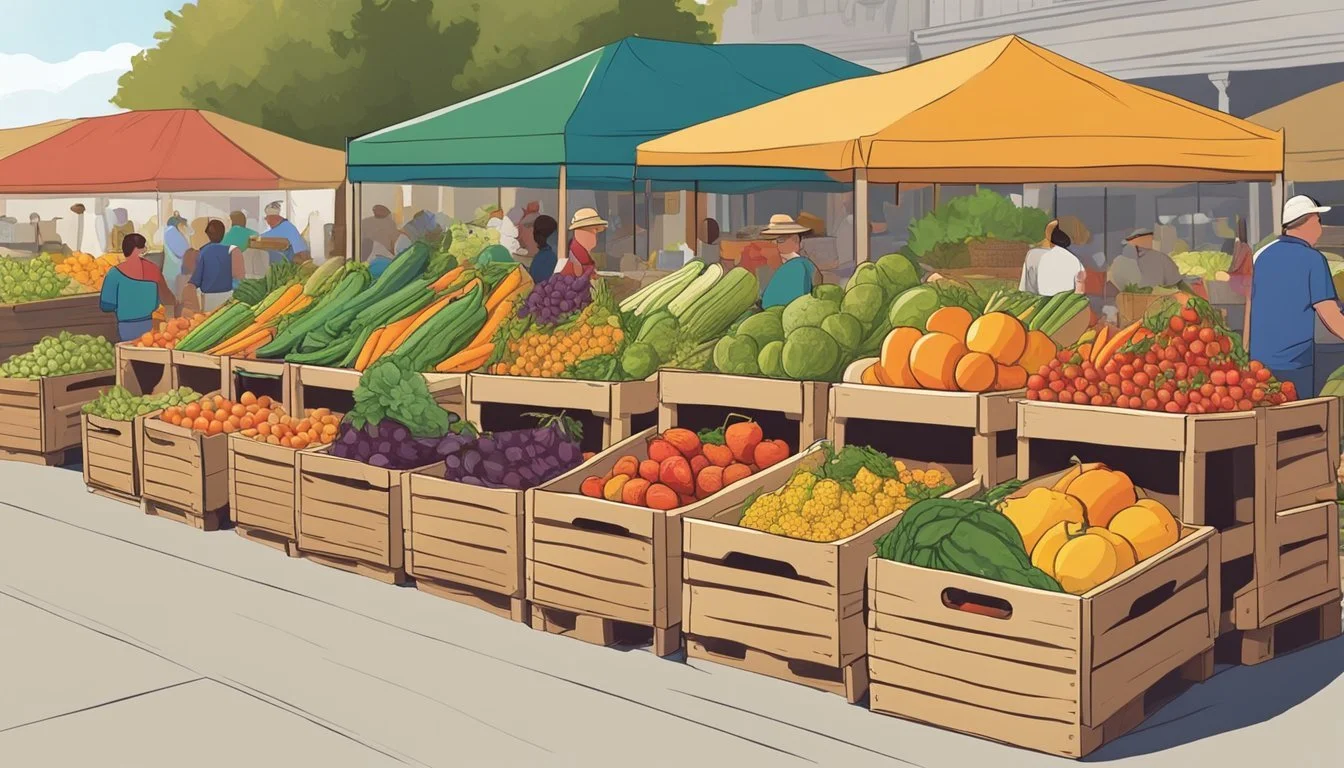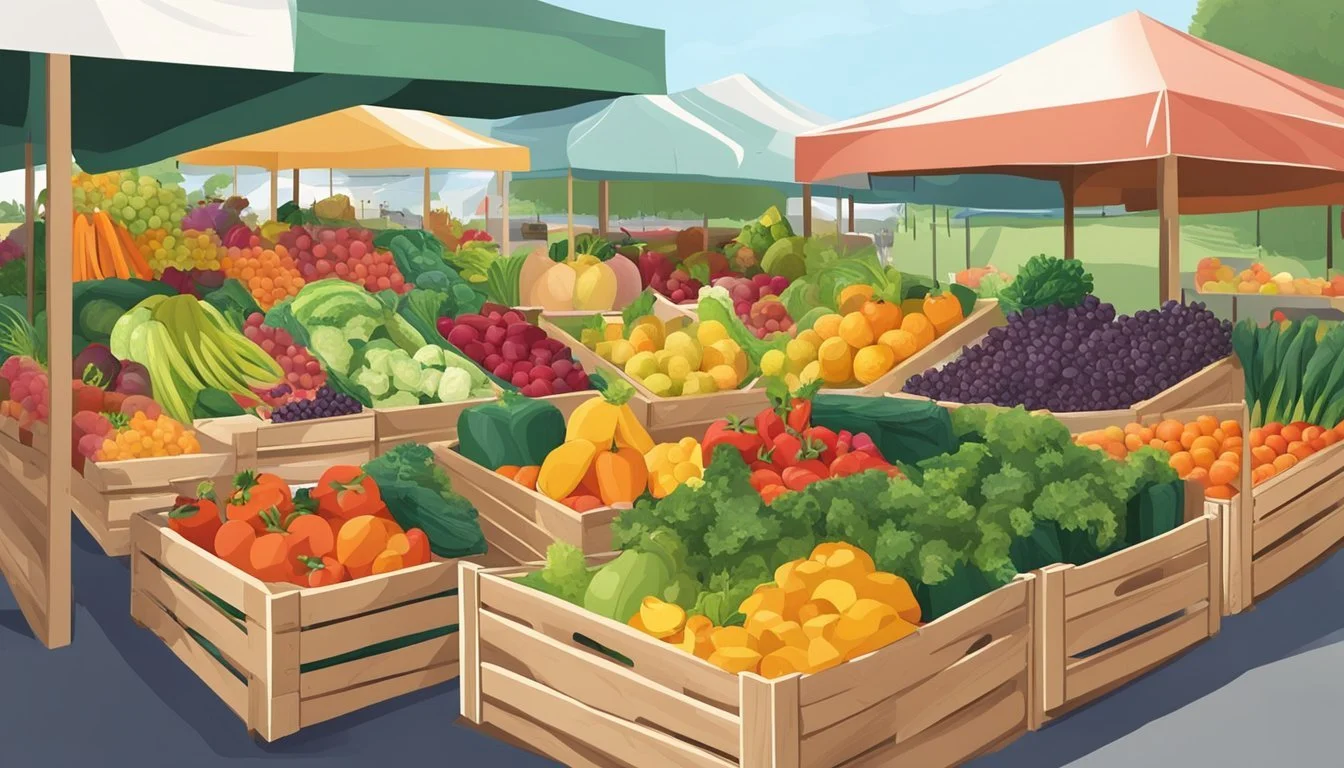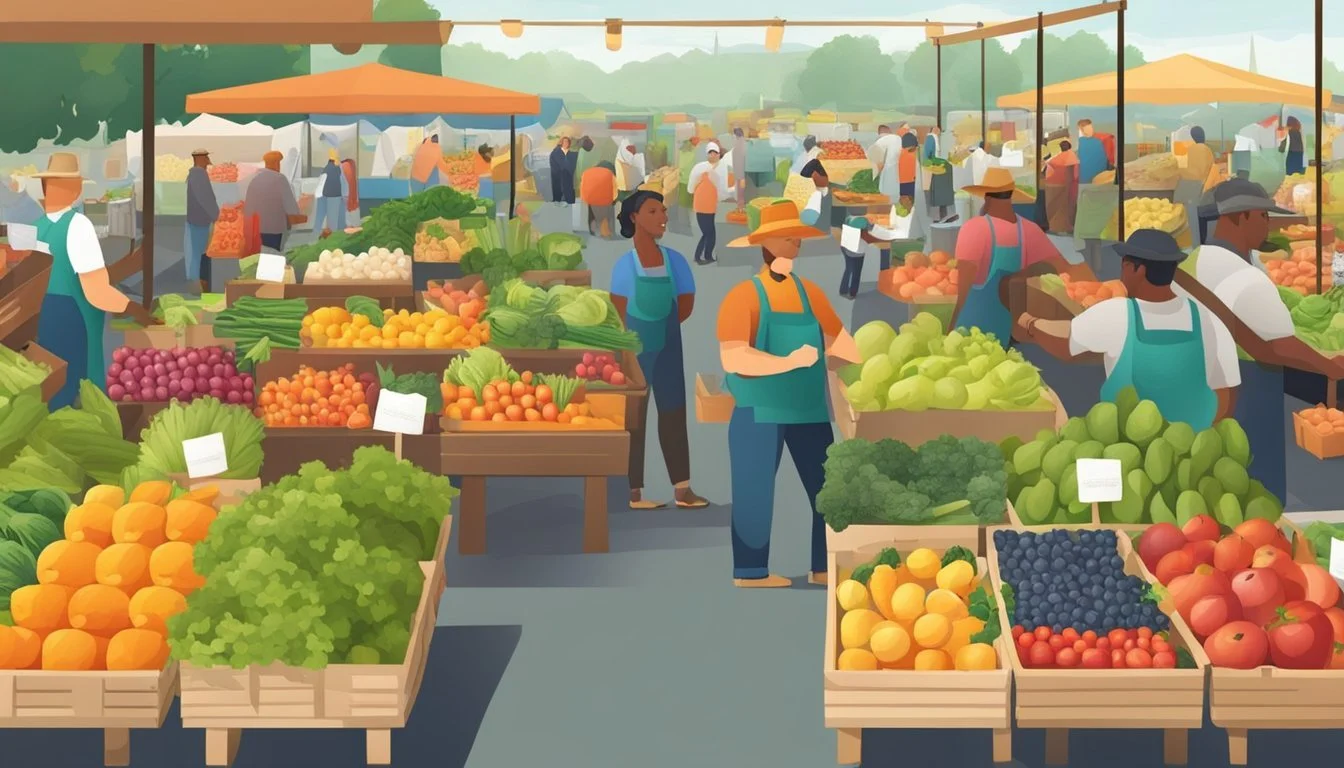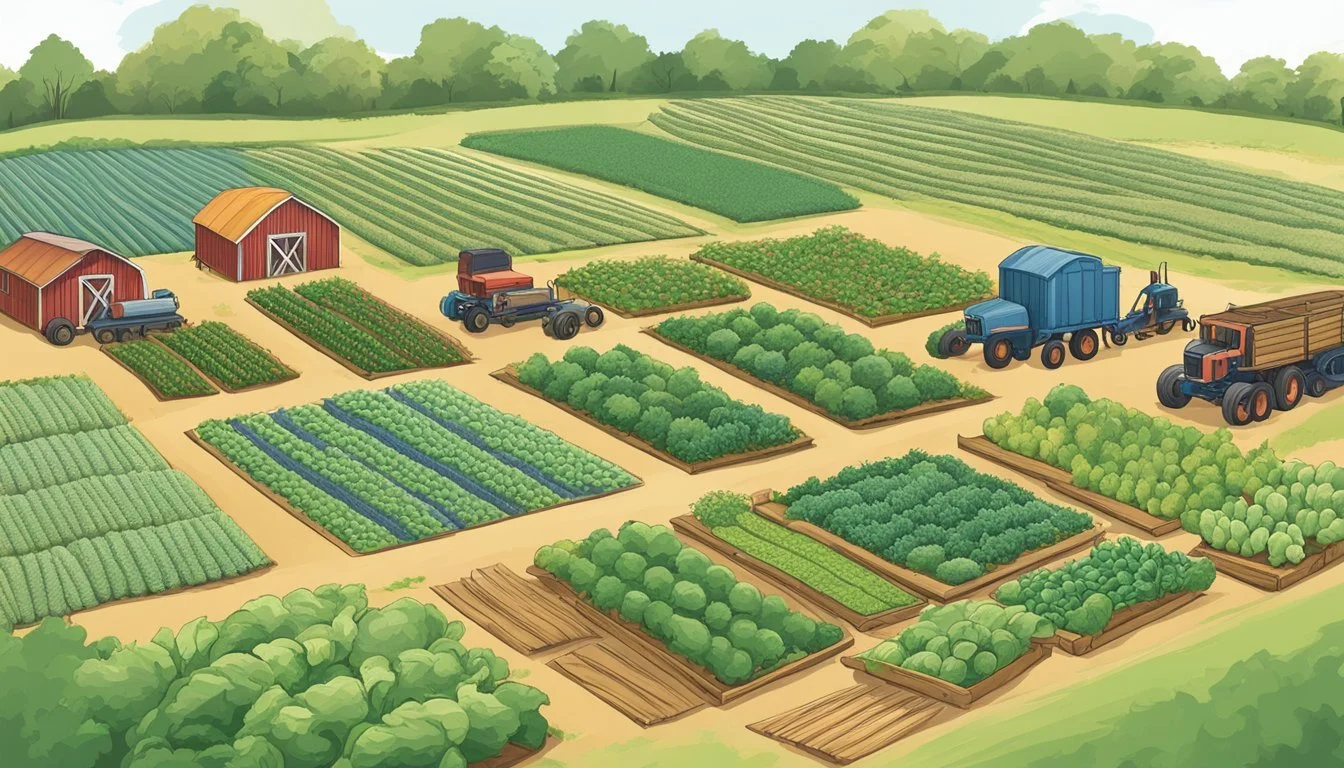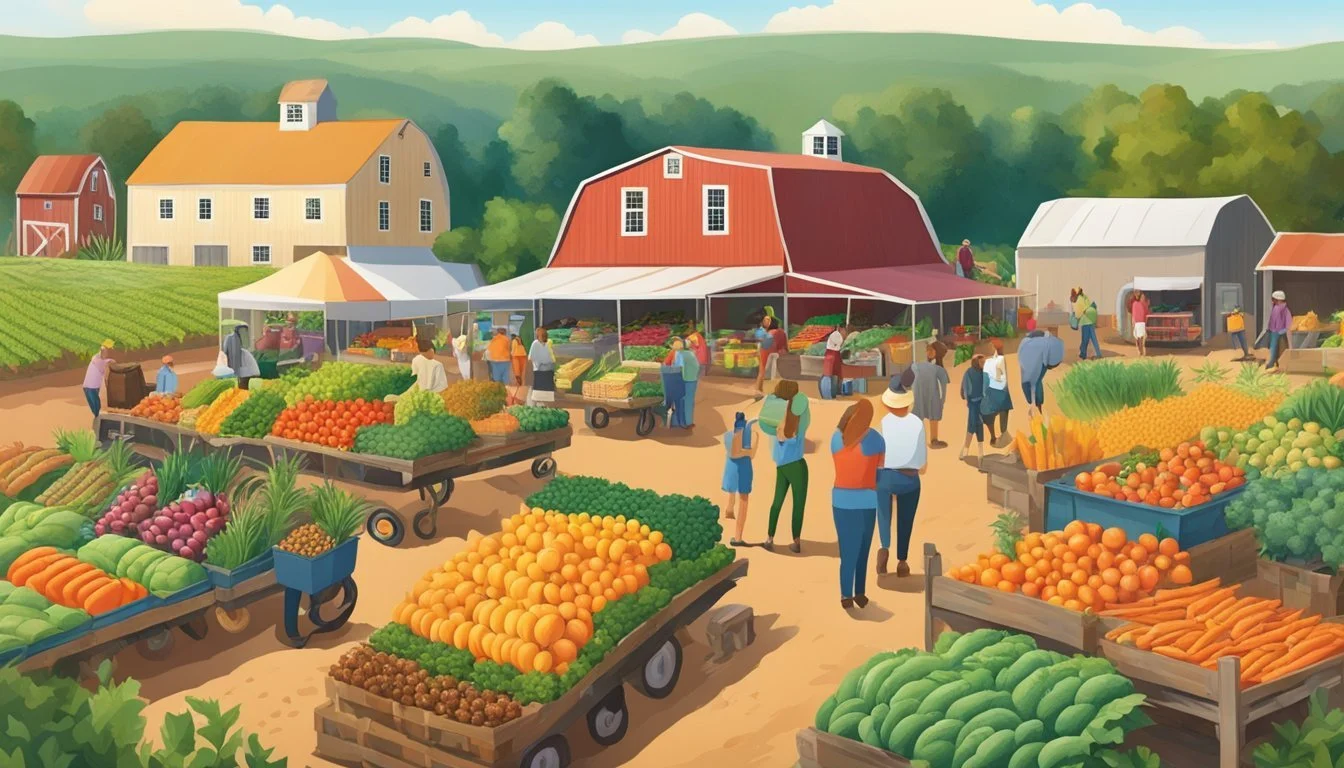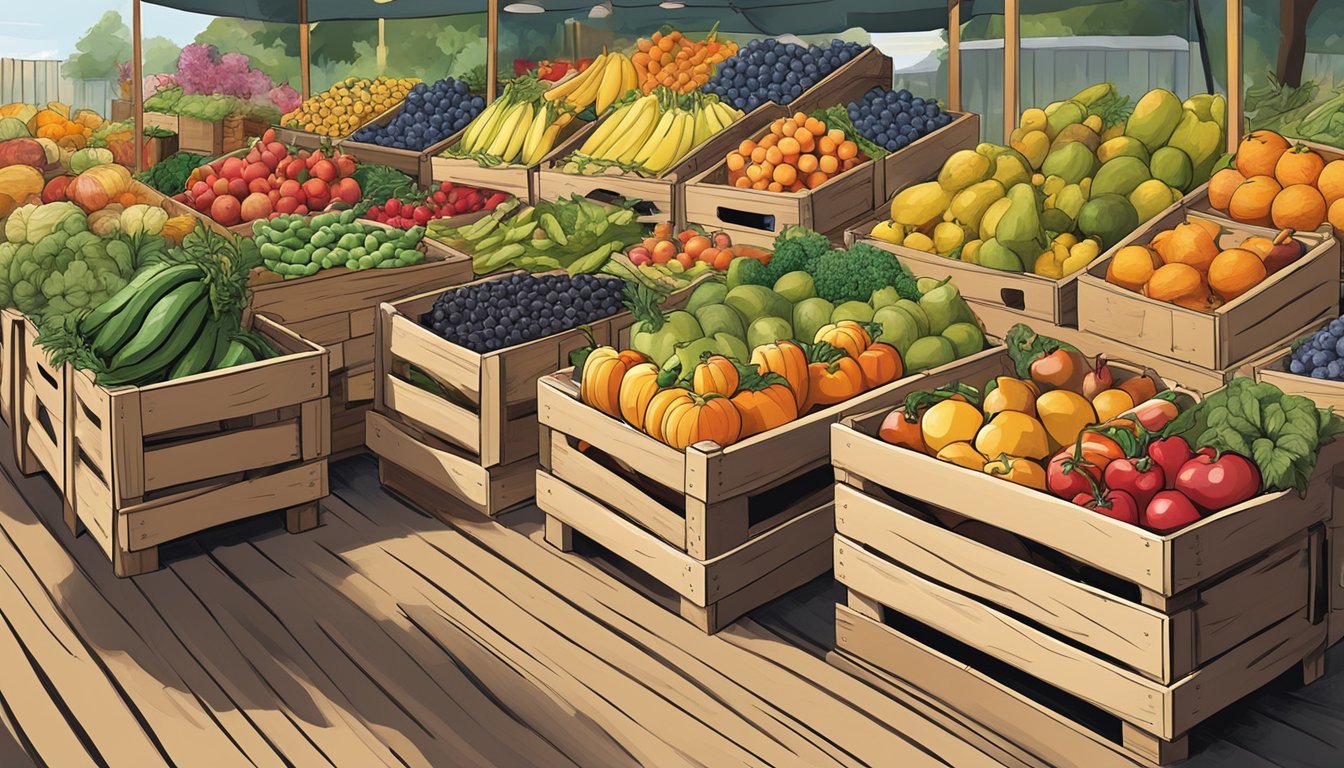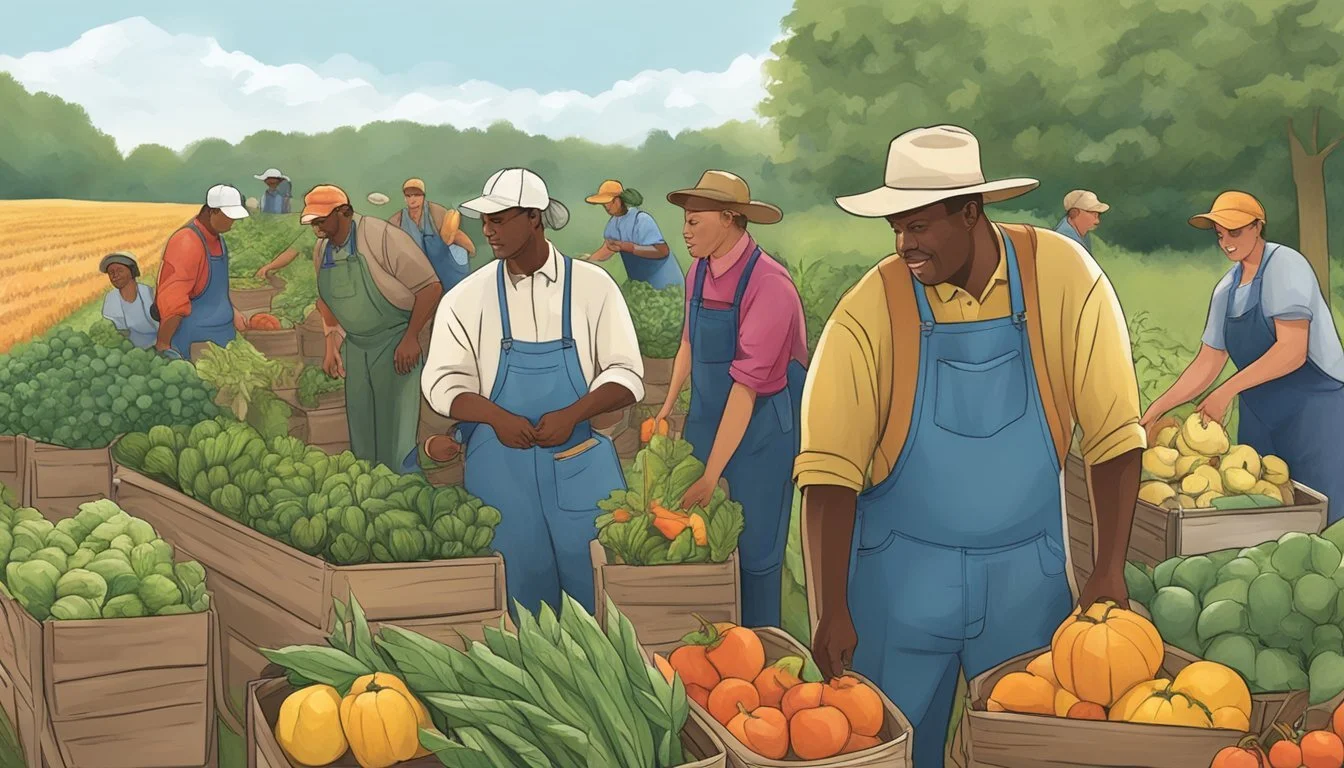Community Supported Agriculture in North Carolina
A Guide to Local CSAs
Community Supported Agriculture, commonly known as CSA, is a farming model that tightens the connection between North Carolina farmers and their local communities. By pledging support to local farms, community members receive regular shares of the harvest throughout the growing season. This model not only provides consumers with fresh, locally-sourced products such as fruits, vegetables, meats, and cheeses, but also fosters a stable financial base for farmers who cultivate the land.
In North Carolina, the scope of CSA extends throughout its diverse agricultural landscape. Members typically subscribe to receive a weekly or monthly box brimming with seasonal produce directly from small farms, which practice sustainable agriculture. The inherent unpredictability of farming due to variables like weather means that part of the CSA experience includes sharing in the risks and bounties of agricultural yields.
CSAs in North Carolina offer various subscription options. Some farms specialize in all-vegetable or all-meat CSAs, while others provide a mix of produce, eggs, and dairy. By investing in a CSA, consumers in North Carolina not only enjoy the palpable benefits of fresh farm products, but also contribute to the preservation of local farming communities and sustainable agricultural practices.
The Basics of CSA
Community Supported Agriculture (CSA) in North Carolina epitomizes a collaborative approach where consumers directly support local farmers by subscribing to regular produce deliveries, thus sharing both the bounty and risks of farming.
What is CSA?
Community Supported Agriculture (CSA) represents a model of food distribution that links local farmers with their consumers. Subscribers, often referred to as members, purchase shares of a farm's expected harvest, providing financial support for the farmer at the onset of the growing season. This model inherently fosters a community ethos and a sustainable agricultural practice as consumers receive fresh, locally-grown products.
Membership and Subscription
Acquiring a CSA membership involves choosing a subscription that may range in cost and duration, depending on the farm's offerings. Costs typically vary between $400-$700 annually, but options can include:
Weekly or monthly boxes
One-time payments or installment plans
All-vegetable, all-meat, or mixed product offerings
Subscribers are then entitled to a portion of the farm's harvest, which can include an assortment of fruits, vegetables, eggs, meats, and other local farm products. As harvests depend on the season and farming conditions, members enjoy a variety of produce throughout their subscription period.
CSA in North Carolina
Community-Supported Agriculture (CSA) has become a vital part of North Carolina's agricultural landscape, connecting local farms to communities and providing residents with fresh, seasonal produce. This partnership ensures the support of local farmers throughout the seasons and fosters a sense of community engagement.
History and Growth
The concept of Community-Supported Agriculture took root in North Carolina after the first CSA was established in Massachusetts in 1984. Since then, CSA programs have seen significant growth across the United States. North Carolina has been a part of this national trend, where the number of CSAs has burgeoned to over 100. This expansion reflects a growing interest from both consumers and farmers in fostering local agricultural endeavors.
Prominent North Carolina CSAs
North Carolina is home to a variety of notable CSAs that cater to the diverse needs of its residents.
In Raleigh, the presence of CSAs reflects the community's commitment to local agriculture, with operations like Willow Spring offering USDA Certified Organic produce.
The Charlotte area benefits from CSAs that provide an assortment of fruits, vegetables, and other farm products.
Across the Triangle region, which includes Raleigh, Durham, and Chapel Hill, numerous CSAs contribute to the local food scene with their seasonal offerings.
Some specific farms have gained prominence due to their CSA models:
Asgard Farm in Gibsonville exemplifies adaptability with a range of CSA offerings.
Faucette Farms in Browns Summit is known for its dedication to sustainability.
PTB Farm in Reidsville has a reputation for providing a surprising mix of contents in their CSA boxes, a result of both the farmers' planning and natural variation.
Local farms across the state, including those in Pittsboro and Fairview, continue to strengthen the connection between North Carolina residents and the sources of their food through CSA programs.
Benefits of CSA
Community Supported Agriculture (CSA) presents a spectrum of advantages that align with public health, environmental sustainability, and economic stability within North Carolina. It nurtures a direct relationship between consumers and local farmers, emphasizing the provision of fresh, organic, and local food.
For Consumers
CSA members receive a multitude of benefits, particularly access to fresh, seasonal produce that often surpasses what's available in grocery stores. Participating in a CSA allows individuals to:
Experience diverse produce: Consumers enjoy a variety of fruits and vegetables, including heirloom species that are not commonly found in supermarkets.
Support food security: By paying in advance, consumers help ensure a stable market for local farmers, contributing to community resilience against food insecurity.
For Farmers
For farmers, CSA is a beneficial model because it:
Ensures pre-season funding: Farmers receive funds at the start of the season, aiding cash flow for planting.
Builds community connections: They gain a dedicated customer base, fostering a stronger sense of community.
Reduces marketing costs: Farmers spend less on advertising, able to focus more on the farming itself.
For the Local Economy
The local economy gains strength through CSAs in several ways:
Stimulates local spending: Dollars stay within the community, cycling through other local businesses.
Creates jobs: A thriving local farming sector can contribute to job creation both on and off the farm.
For the Environment
Environmentally, CSAs contribute positively by:
Reducing the carbon footprint: Shorter travel distances for food lower greenhouse gas emissions.
Promoting sustainable farming practices: Many CSA farms employ organic methods, resulting in less soil and water contamination.
Each of these factors consolidates the CSA model as a mutually beneficial approach for consumers, farmers, the local economy, and the environment in North Carolina.
Challenges of CSA
In North Carolina, Community Supported Agriculture (CSA) faces a unique set of challenges, from the day-to-day operations on a farm to the broader financial and environmental contexts that impact sustainability and profitability.
Operational Challenges
Operational challenges in a CSA model can be complex due to the need for meticulous planning and labor management. Farmers must balance multiple tasks including crop scheduling, harvesting, and distribution. They have to ensure that shares are abundant and diverse each week for their members, which requires diverse crop knowledge and the ability to adjust to rapid changes. Sudden labor shortages or increased workload can disrupt this balance, affecting the quality and quantity of produce available.
Environmental Challenges
Environmental factors such as weather are unpredictable and can pose significant challenges for sustainable agriculture in North Carolina. Excessive rainfall or drought can harm crops, compromise soil quality, and disrupt the farming schedule. These challenges necessitate the implementation of innovative farming practices to stabilize production, which may involve irrigation systems, crop rotation, and cover cropping to maintain soil health and mitigate the impacts of severe weather.
Financial Challenges
Financially, CSA farms must navigate the delicate balance between the share price they set and the members' perceived value. The budget of the farm must account for all costs, including seeds, equipment, and labor, while keeping the share price accessible to a broad demographic. Upfront payment for seasonal shares can aid in the farm's initial cash flow, but it also places pressure on farmers to deliver consistent value. Unexpected expenses or lower-than-expected harvest yields can strain the farm's financial stability and challenge the CSA's ability to deliver on its promises to members.
Types of CSA Models
In North Carolina, Community Supported Agriculture (CSA) models vary, offering consumers a range of options in accessing fresh, local produce directly from the growers. These models differ mainly in who initiates the CSA and how produce is sourced and distributed.
Producer-Initiated CSAs
Producer-initiated CSAs are led by individual farmers who offer shares of their harvest to consumers. In these models, consumers pay in advance for a season's worth of produce, usually gleaned from one farm. This financial commitment helps cover the upfront costs of farming, and in return, members receive a regular supply of fresh, locally-grown products. Examples may include a variety of all-vegetable or all-meat CSAs.
Member-Initiated CSAs
Member-initiated CSAs are formed when a group of consumers come together to approach a farmer to create a CSA. These differ from the producer-initiated model in that the consumers themselves often take on more organization and distribution efforts. They may have a say in the types of crops grown and might share in both the bounty and the risks of the agricultural venture.
Multiple-Producer CSAs
Multiple-producer CSAs, also known as cooperative CSAs or co-op CSAs, involve products from several farms, rather than a single source. These CSAs are beneficial in diversifying the types of produce available and are especially helpful for small farms that might not individually have enough quantity or variety to support a full CSA on their own. Each participating farm contributes to the shared CSA boxes.
Organization-Initiated CSAs
Organization-initiated CSAs are typically launched by non-profits or other community groups rather than by the farmers themselves. These organizations facilitate relationships between local farmers and community members, handle marketing and subscriptions, and often focus on broader goals like food security and education, in addition to the distribution of farm products.
Getting Involved with CSA
Joining a Community Supported Agriculture (CSA) program allows individuals to purchase a share of a farm's produce, ensuring a regular supply of fresh local foods such as vegetables, fruits, meats, and eggs. In North Carolina, the process to engage with a CSA is straightforward, providing both farmers and consumers with mutual benefits.
How to Join a CSA
To become a CSA member, one should explore local CSA programs and select one that best fits personal preferences and dietary needs. Prospective members can often join via farm websites or by contacting the farms directly. Members typically pay an upfront membership fee to cover the anticipated costs of the farm's harvest. This fee can vary but usually ranges from $400 to $700 annually, depending on the offerings and length of the subscription.
Steps to Join:
Research local CSA options in North Carolina.
Contact the CSA to inquire about availability and specific offerings.
Subscribe by completing any required forms and paying the membership fee.
Receive regular boxes of farm products throughout the season.
Tips for Choosing the Right CSA
Selecting the right CSA is essential as it determines the type of products one will receive and the overall satisfaction with the program. When choosing, consider the types of foods offered and whether the variety suits your needs. It's important to ask questions about the farming practices, delivery options, and what happens if you cannot pick up a share.
Considerations:
Variety: Look for a balance of vegetables, fruits, meats, and eggs if desired.
Location: Ensure the pick-up location or delivery service is convenient.
Communication: Evaluate how well the CSA keeps members informed about the harvest and any changes.
Questions to Ask:
How does the farm ensure a steady and varied harvest?
What are their practices regarding animal welfare and crop management?
What are the policies on missed pickups or vacation holds?
By carefully considering these factors, individuals can make informed decisions and support local agriculture through their involvement in a CSA.
Managing a CSA Farm
Managing a CSA Farm in North Carolina involves thoughtful planning and meticulous execution. From crafting a solid business plan to establishing effective distribution channels, successful CSA operations rely on a farmer's ability to adapt and engage with the community.
Creating a Business Plan
A comprehensive business plan is paramount for any CSA farm. It should detail the farm’s objectives, financial projections, market analysis, and the types of shares to be offered. Determining the size of the operation and the variety of produce affects both planting schedules and harvesting methodologies. A plan also helps in securing financing or grants tailored to local farms.
Recruiting Members
Recruiting members requires a strategic approach. Farmers must communicate the value of their shares and establish trust. Utilizing social media, local markets, and community events can effectively reach potential CSA members. Offering diverse share options, from all-vegetable to all-meat, can cater to varying consumer needs and preferences.
Distribution and Delivery
Effective distribution and delivery systems are crucial for member satisfaction. Farmers must decide whether to offer on-farm pickup, local delivery, or drop-off points. Regular, reliable delivery schedules help members plan their meals around the CSA, while clear communication regarding the seasonal variability of shares can set proper expectations.
CSA Farm Best Practices
CSA Farm Best Practices include maintaining high-quality produce, employing sustainable farming practices, and building a strong community connection. Open communication about the farming process, including planting and harvesting stages, strengthens the relationship with members. Transparency and responsiveness can foster a loyal membership base and secure the farm's reputation within the local community.
Products and Produce in CSA
Community Supported Agriculture in North Carolina embraces a rich assortment of products, ensuring a diversity that caters to the changing seasons and local preferences. The offerings typically include a range of vegetables, fruits, meats, eggs, and cheeses, along with specialty items like fresh flowers and herbs.
Seasonal Varieties
In North Carolina, CSA members may expect a rotation of vegetables and fruits according to the growing season. Spring might bring new vegetables, such as tender greens and snap peas, while summer could introduce a variety of berries, including strawberries. As fall approaches, root vegetables and autumnal fruit varieties come to the forefront.
Spring
Greens (e.g., lettuce, spinach)
Snap peas
Summer
Tomatoes
Berries (e.g., strawberries, blueberries)
Fall
Root vegetables (e.g., carrots, beets)
Apples
Value-Added Products
CSAs in North Carolina may also offer value-added products which enhance the diversity of their shares. These can include cheeses, both fresh and aged, from local dairy farms. Additional items, such as fresh flowers and herbs, are often included to complement the produce selection.
Dairy
Fresh cheese (e.g., mozzarella)
Aged cheese (e.g., cheddar)
Specialty
Bouquets of fresh flowers
Assorted herbs (e.g., basil, cilantro)
Members can typically expect these items alongside staples like meat and eggs, which are a common part of CSA shares in the region. The products provided showcase an emphasis on local, sustainable agriculture and support for North Carolina farms.
Community and CSA
Community Supported Agriculture (CSA) creates a unique relationship between the local community and farmers, deepening the sense of community through shared experiences and education.
Building Relationships with Members
In North Carolina, CSAs are a testament to the strengthening bond between consumers and farmers. Members gain a closer connection to their food source through direct relationships with the people who grow their food. This interaction not only supports the local community but also fosters a shared responsibility, as members often share the risks associated with farming, such as weather challenges and crop yields.
Educational Opportunities
CSAs provide education on seasonal eating and sustainable agriculture to their community. Newsletters often accompany CSA boxes, offering insights about the produce, stories from the farm, and cooking tips. These diverse forms of education help members learn more about the food they consume and how it’s produced, reaffirming their relationship with the community and local food systems.
Events and Social Engagement
Beyond the weekly or monthly produce box, many CSA farms host events that encourage social engagement among members. Farmers markets and farm visits serve as platforms where individuals can engage with growers and each other, thereby nurturing a strong local community. These activities allow members to contribute to a thriving CSA program and experience the joys of community engagement firsthand.
Support Resources for CSA
Community Supported Agriculture in North Carolina benefits from a wealth of resources aimed at supporting both farmers and consumers. These include comprehensive guides and toolkits for establishing CSAs, as well as robust support from local and national organizations dedicated to the success and sustainability of this farming model.
Guides and Manuals
NC State Extension Resource Guide: This guide covers essential topics for CSA farmers including business plan development, budgeting, share pricing, and member recruitment.
Local Harvest - A Multifarm CSA Handbook: Published by SARE in 2010, this handbook provides detailed insights into cooperative marketing and other multifarm CSA operations.
Local and National Organizations
North Carolina Resources:
NC State Extension: They offer a plethora of support for CSA farmers, from startup to marketing.
National Resources:
CSA Innovation Network: A hub for sharing tools, programs, and ideas to support CSA development on a wider scale.
ATTRA - Sustainable Agriculture: ATTRA promotes sustainable farming practices through CSAs and offers support in connecting people with their food sources.
Each of these entities plays a pivotal role in fostering Community Supported Agriculture's growth. They offer educational materials, practical support, and a community for shared learning, making CSA a viable and sustainable option for farmers and consumers alike.
Future of CSA in North Carolina
The landscape of Community Supported Agriculture in North Carolina is poised for growth, with innovations in sustainable farming and strong community initiatives driving its expansion.
Trends and Projections
The number of CSAs in North Carolina has been steadily rising, with over 100 operations and growing interest from consumers and farmers alike. Trends indicate a shift toward local, healthy food options, and CSAs offer a direct channel to meet this demand. Projections suggest continued growth in local agriculture participation as consumers increasingly prefer food sourced from CSA farms.
Advancements in Sustainable Farming
Sustainable agriculture is integral to the future of CSAs in the state. Farms are adopting practices that protect the environment, such as crop rotation, organic inputs, and energy-efficient technologies. These advancements contribute to producing a variety of high-quality, local farm products while ensuring the long-term viability of North Carolina's agricultural landscape.
Community Impact Initiatives
CSAs in North Carolina foster significant community impact through supporting local economies and increasing access to fresh produce. Initiatives often include educational programs about sustainable food systems, partnerships with schools for healthy eating projects, and food donation schemes. This community-centric model will likely continue reinforcing the bond between farmers and their neighbors, supporting a robust, interconnected local food network.

